Interview: Scott Croyle of HTC
Our talk with the Senior VP of Design on why he hides his tech products at home and what he fights hardest for

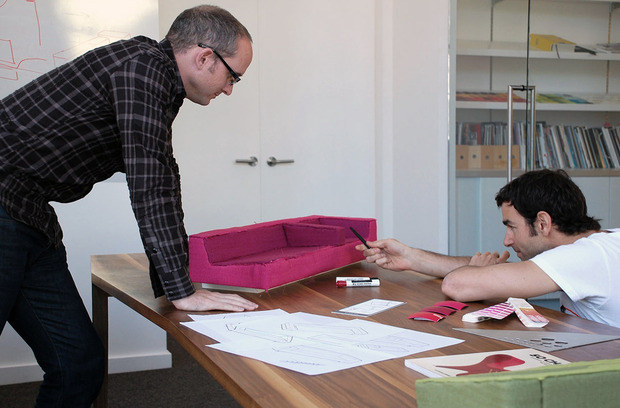
Faced with some very deep pocketed rivals, decreasing market share and customers who are constantly looking for what’s next, Scott Croyle, HTC’s Senior Vice President of Design, is a master at finding his vision and keeping the design team motivated. We met up in London to talk about his three years in the role, how he leads the company’s industrial and user experience design teams and some of the product innovations he and his team have been responsible for—including the current HTC One Android smartphone—what some believe to currently be the best smartphone in the world.
Evan Orensten: How would you describe your role?
SC: My main role, [what] I really give a lot of thought to, is how do we execute our strategy as a company and how do we step back. Like now we’re in the moment of crafting that strategy based on the new reality of the company struggling and wanting to make sure that strategy feels authentic; that it’s who we are, based on our strengths and recognizing our weaknesses so that we can come up with something that’s authentic. Second is how we manifest that strategy. If we think about our strengths as a company, one of them has to be the design user experience—we develop well-crafted phones that feel great, that look great, that people respond to, that there is an emotional connection that we strive [to create] with people. And you can see that now that our [competitors] have launched [their latest phones], that you know what? This phone is still the best phone. That’s really rewarding.
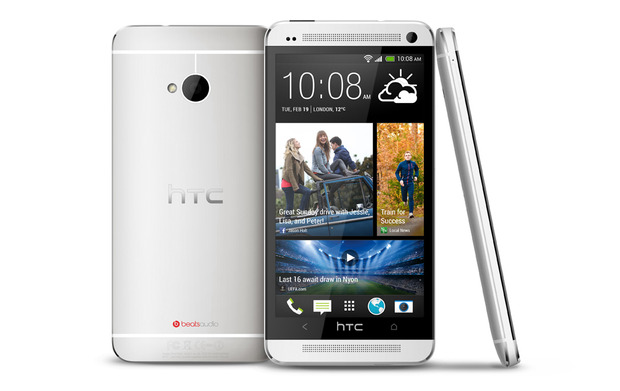
EO: I take it you mean the HTC One, which you’ve just picked up and waved around?
SC: Yes, the HTC One. On the experience side—which is something I really only became involved in two to three years ago—that’s just a fascinating part of the business to be in. One, because I’m learning. And two, as we move forward, the experiences become more key. We’ve always been kind of leading in the Android space of who’s doing the most innovation, who’s really pushing the boundaries of what could happen on Android. Between that and offering this customized experience for people, and that was based on just paying attention to the way people are using their phones. And actually not the way people are using them, the way I’m using my phone, the way my team is using their phone and recognizing, “Oh, I’m going app to app to app, to website to website” and coming to this space where you can put that together in a way that’s meaningful. And it becomes a platform that we can really customize and have it even more fine-tuned around what people want to see.
EO: BlinkFeed [the feature that lets you aggregate content and social media feeds on the homescreen], really is practical—and I’m not just saying that because Cool Hunting is one of the recommended feeds! How does innovation like that come out of your team?
SC: I manage both the user experience and the industrial design teams, as well as advanced planning concepts where we’re looking at more far reaching stuff that might take a little bit longer to implement. BlinkFeed was one of those where it started early on, we started messing with, “Hey, what could that be?” It came out of the design team, but then we quickly needed some structure around it and [we realized that] the planning team could help move it beyond that initial concept.
EO: When will we see more concept or future looking prototypes? You see thinly masked concept cars that are really 85% in production, and concept cars that’ll never be built but make a strong design statement and define a futuristic point of view. Why don’t we see more of that with phones anymore?
SC: That’s a good question. It used to happen more. Remember Philips design back in the day used to have a really strong advanced concept group. I think in product design the reality is—actually, let me describe car design as you brought it up. In car design you come up with a concept and then four to five years from now it ends up in production and the product life cycle is much longer, whereas with consumer electronics it’s so rapid. Something I might view as an advanced concept today, we might be launching in 18 months, so unless it becomes a more cerebral exercise, there’s less value in doing it. It’s almost more of a brand play as opposed to really providing value in terms of product design.
EO: Well why can’t it be cerebral? Why not make the statement that this is what we think a phone will look like in five to 10 years?
SC: The reinvention of communication. Maybe this is a copout, but because of the internet and the flow of information, those concepts that you’re looking for are out there already. For a company like HTC to come in and say, “This is our vision of the future,” it could easily feel like a student project. I think when we’ve looked at projects like that, we ask if we can make it meaty enough where it feels significant enough to be out there, without either feeling like science fiction or like a student project. It’s a good question. We just haven’t found the right opportunity to really bring it out where it’s either too close to what we want to do or it’s too far out and starts to feel a bit naïve.
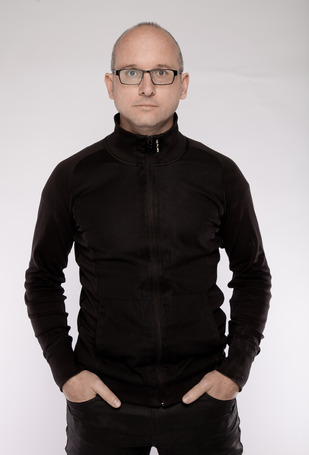
EO: You mentioned earlier that you’re helping to usher in a new era. How do you motivate the design team for this new reality, these challenges and some very intense competition? How do you rally them to think about the short term product map, but also get them in the game for the longer term and fighting for survival of the brand?
SC: Honestly, it’s something I think about a lot, more than I really want to. But I think what’s been good for me as a person and design professional is that it’s a unique learning experience that I actually should be doing all the time, when we’re doing well, and not just when we’re doing poorly. But I think there’s a couple things people want. First, they want clarity on what we’re trying to execute. And that can’t be, “Run a little faster, jump a little higher.” With the One we strongly differentiated ourselves in the market and so there’s gotta be more meat to it than that. Second, people want to feel like there’s a chance to be successful, they want to feel there’s a chance at winning. And by all accounts, at least in terms of the product, you wouldn’t realize this from the news, but the product has been selling well. It sold much better than our previous hero phone.
I think the One has done a couple things the team can take credit for: It’s staved off and halted some losses around our flagship phone. It’s established us again as being the design leader in terms of materials, manufacturing, user experience. The two front facing speakers, the camera, all these came from my team. I always remind them that they are key to reestablishing HTC and putting them on the map. People want to feel like there’s a clear vision in terms of what we’re doing, what we’re trying to achieve with each of our products, [knowing] our guiding principles both on the ID side and user experience side, and then they want to feel like there’s a chance for success.
Design is enough to get you in the game, but the business—it’s complex
EO: It’s tough.The industry is fascinating and going through so much change recently. Now you have some of the biggest entities in the world owning the three biggest manufacturers, and the whole landscape has changed nearly overnight. It’s amazing. I’d love to believe that design is enough, but that’s kind of a fantasy world. How do you go up against other products, the dollars and machinery behind it, these huge limitless pockets pushing whatever product they’re trying to show. How do you fight the good fight against that?
SC: First of all, I have to say imagine where HTC would be without this design; I mean we really would be off the map. Even with the latest Apple launch and they’re talking about Apple going to bigger pixels, who was mentioned in that conversation? HTC and Apple. I feel like without this kind of culture we wouldn’t be in that conversation. It’s kept us in the game and it’s set us in a position where we could jump to the next level. So design is enough to get you in the game, but the business—it’s complex.
During the kind of growth we had we were just going, just reacting as fast as we could and delivering product after product that there wasn’t so much thought about it. As the company started to struggle I think we needed to get more thoughtful and more sharp in how we executed. The team needs to see and feel hard choices that are made around those first two items. They need to see, “Oh, we’re not gonna do this product” or “We’re gonna do this feature because here’s how it fits in our platform.” That’s actually the stage we’re in right now—can we get to a point where we can articulate that strategy as a company to our employees, and to the press, and then we gotta execute.
EO: One question I love asking designers is how they carve out a project budget and what they fight for in product meetings. Regardless of the industry, there’s only so much money to go toward making a hotel room, a car, a phone, and you have to divvy that money up in certain ways so you can have the moments or aspects of the product that people find significant. How do you divvy up the budget for a device you’re working on?
SC: The way I like to think about it is whatever category we play in, I wanna be the best product. In the super-phone category, we have the best product. As we go down the price points, the specs need to be competitive and the industrial design needs to float above the rest. That’s what I believe. I feel we should be the best in every category. When I talk about executing the strategy, that’s the hard choices that you have to make as you go down into different price targets. There are some price targets we shouldn’t be involved in because we can’t deliver what we do best, which is great design.
EO: What are the fights you fight hardest for?
SC: They come to me and say “Scott, I want to put a zoomable lens on there,” and then they’re like, “It’s kinda big.” The product planner is like, “That’s expensive.” The sales team is like, “I don’t think we can charge more for that.” Then the customer is like, “What’s the value to me?” It’s so easy to kill ideas. I’ve sat in meetings where you just throw out one phrase and you start building up and within six weeks the idea is dead. And I’ve been guilty of that a lot when there’s something I don’t believe in. And that’s what other people are doing in innovation, so I think a lot about how—at HTC—did we kind of pull this off? Coming back to, not to give all the credit to One? It was really just a vehicle for creating this culture. What do I fight for? I think one is just the purity of our design. And that’s super, super hard just because the industry is changing. There’s so much, so many different opinions. Everybody is a designer. It’s like everybody’s a marketer, right? Everybody has an opinion on what’s a good commercial or what’s a good design.
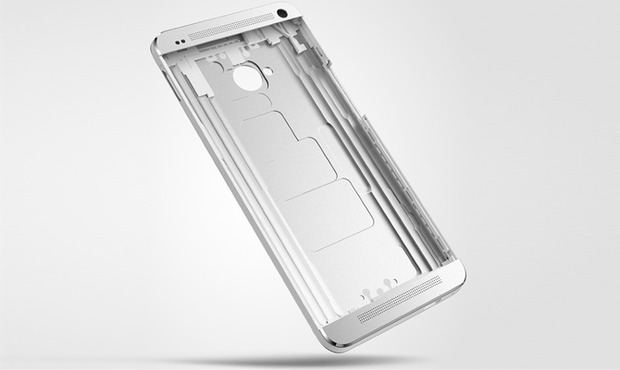
EO: Like I said earlier, if designers ran the world…
SC: Actually, I was on a panel this morning and the topic was “How do you get to good innovation,” and the head of BMW design spoke first and I was right after him. I’m like, “Gosh, this is a company that has unlimited resources and…
How do you create an environment where people can be successful, because…an idea is actually a very fragile thing
EO: But it’s independent and is an outsider in the industry…
SC: Yeah, yeah. He’s got three brands—Mini, BMW and Rolls—he’s got a complex set of design problems, but I knew he’d speak about inspiring the team, so I was like, “I’ll talk about a different aspect.” And it’s kind of the political nature of a company and what it means—how do you create an environment where people can be successful, because, you can imagine, an idea is actually a very fragile thing.
If you ask one of my designers to look at a business plan, they’ve got no opinion on it. They just don’t have the expertise, so I think that’s one thing that we as a design driven organization work with our CEO all the time on, is: Who are we? What represents us? What is our character? How do we make sure that our products stand out from the pack?
EO: Is there an example on the One of something you were adamant about for it to be successful in your opinion?
SC: Two things I felt really strongly about. One is the ultrapixel camera and the reason I felt like it was such an opportunity is that all the marketing people were saying consumers buy megapixels, that’s what they buy—four, eight, 12, 16, 42, whatever it is, they hear bigger numbers and think it’s better. And the reality is if you speak to any camera person, they say it’s completely bullshit.
We’re in that conversation, even with the Apple launch and I take a lot of pride in that fact.
EO: It’s not about the megapixels.
SC: And I really wanted to take this opportunity for us—you have a few opportunities in your life as a company to establish yourself as hey, we’re gonna do something differently. And I think the camera was a good opportunity for us to say that’s all bullshit—excuse my language—that’s all baloney. It has no meaningful difference to the consumer; there’s actually no benefit to doing that. That was one where we used that as a vehicle to establish ourselves as a camera-centric company, and it was largely successful. When people talk about cameras, they talk about key competitors, Nokia being one, iPhone does a good job, then they talk about the One. We’re in that conversation, even with the Apple launch and I take a lot of pride in that fact.
The other was the all metal unibody and zero gap construction. When you talk to people, they’re like, “Oh yeah, it feels great,” but they don’t know why, they can’t put a finger on it. But it’s that solidness of construction, that seamless surfacing that feels so perfect. And it was a big challenge for us, it still is.
EO: That’s a really interesting segue to all the big players—many aren’t manufacturers, you are. How do you tap into that aspect of the engineering, that access to those machines, that plant. How do you leverage it as part of your design process?
SC: So I should clarify. We manufacture, but what we do is we manufacture the printer circuit boards and do final assembly, so for this housing we use vendors for, but the mantra that we have within the company when you work with any sort of vendor is that we have to own the process, not our vendors. It’s too easy for a vendor to say, “Ah, it’s difficult, it’s hard. We’re not sure we can do that, we have yield problems.” If we find that we can go in and own it, then we can help them make money and we can help at the end of the day for us to make money because we can deliver a superior product. It’s too easy for an engineer or designer to say, “Yeah, the vendor says we can’t do it.” And what you realize when you dig a little deeper is that sometimes they can. And this one was super, super hard for us because we had some expertise machining metal unibodies because we pioneered that.
EO: Where do you find inspiration?
SC: I think the separation from our day-to-day is so critical, so I look at a variety of things. Artists, architects, automotive pushes a lot of boundaries, then ultimately, there’s furniture. Furniture is much closer to pure expression than any other form of industrial design. But in terms of experiences, I look to my own usage patterns, the team looks to their own usage patterns. What do I really want to do on the phone? There’s so many cool things happening out there, such a rapid pace of innovation of services happening, that that’s having a fire hose put to your face and trying to drink a little water out of it. So the trick there is: How do you put that through a filter where the relevant stuff bubbles, it differentiates itself? We don’t have a particular process for that. It’s us sitting around talking about it and deciding what we feel would be most relevant for people.
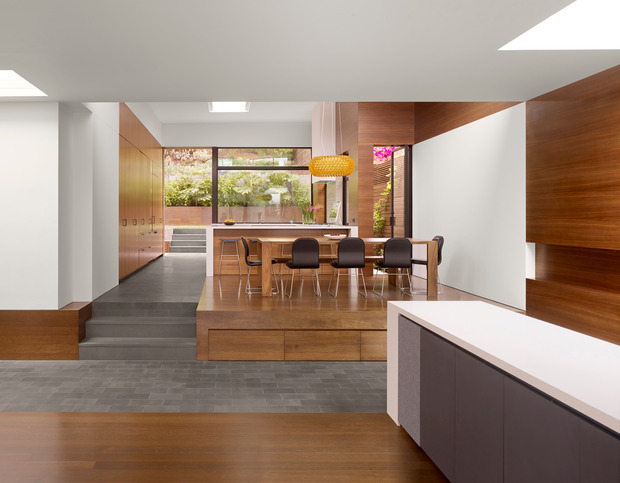
EO: Speaking of furniture, I hear you have a new house that you renovated?
SC: It was so cool about working with an architect and being on the flip side of the coin, it was an incredible process. That’s why I moved into design. I love the process, I love helping companies and people achieve great things. And with the house that was a great opportunity to be on the flip side of that process. I look for inspiration in my house. I don’t want the technology to be seen. I don’t want a TV in the living room—I want that tech stuff to go away. It’s funny from a tech professional and what we do to say that, but I find technology is so prevalent that I’m looking for a little breathing room, where do you find the inspiration, where do you get away from it?
Images courtesy of HTC and Scott Croyle












